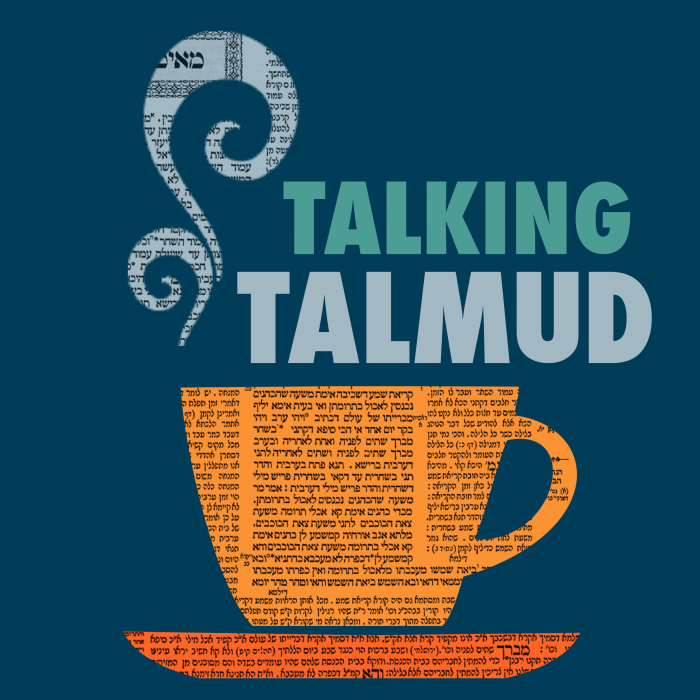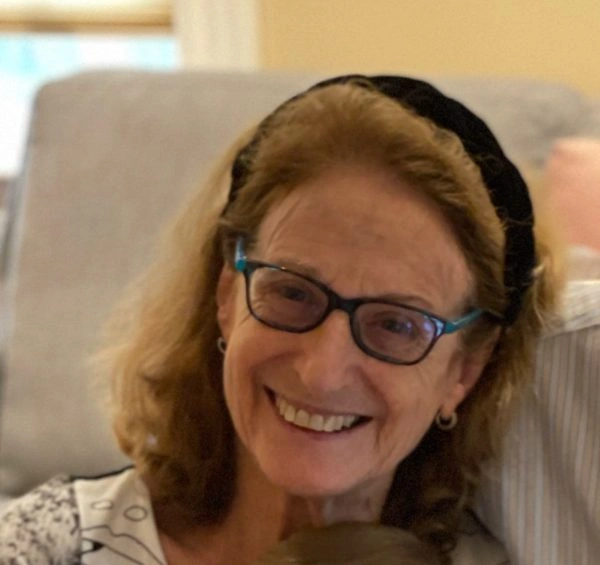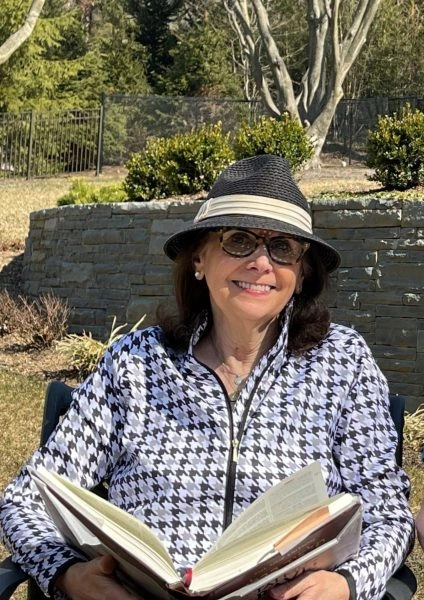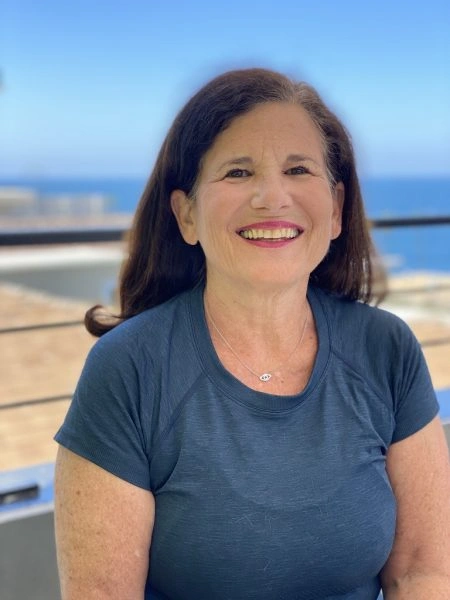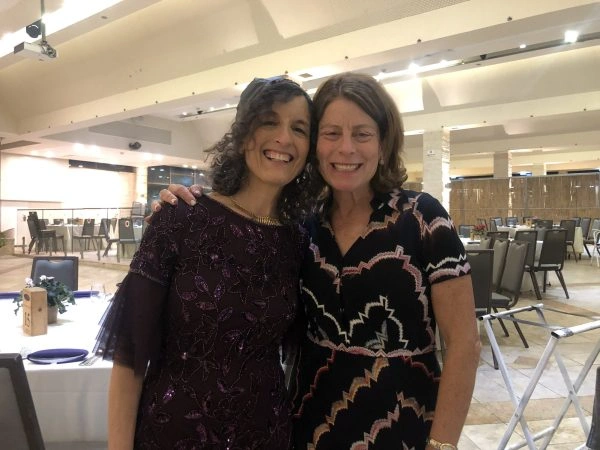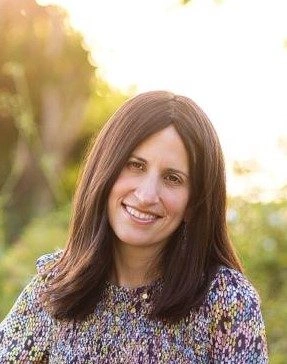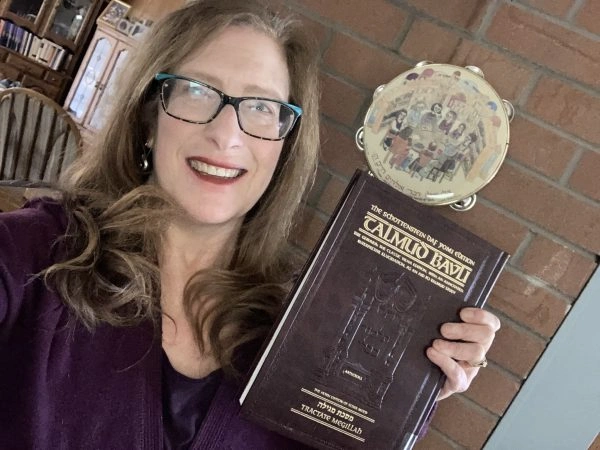Sanhedrin 52
הַאי ״אָבִיהָ הִיא מְחַלֶּלֶת״, מַאי דָּרֵישׁ בֵּיהּ?
what does he derive from this verse: “She profanes her father” (Leviticus 21:9), if he does not employ the term “her father” for a verbal analogy concerning a young betrothed woman who committed adultery, as Rabbi Akiva does?
מִבְּעֵי לֵיהּ לְכִדְתַנְיָא: הָיָה רַבִּי מֵאִיר אוֹמֵר, מָה תַּלְמוּד לוֹמַר ״אֶת אָבִיהָ הִיא מְחַלֶּלֶת״? שֶׁאִם הָיוּ נוֹהֲגִין בּוֹ קוֹדֶשׁ – נוֹהֲגִין בּוֹ חוֹל, כָּבוֹד – נוֹהֲגִין בּוֹ בִּזָּיוֹן. אוֹמְרִין: ״אָרוּר שֶׁזּוֹ יָלַד, אָרוּר שֶׁזּוֹ גִּידֵּל, אָרוּר שֶׁיָּצָא זוֹ מֵחֲלָצָיו״.
The Gemara answers: He requires it for that which is taught in a baraita: Rabbi Meir would say: Why must the verse state: “She profanes her father”? To teach that if initially they would treat her father in a sacred manner, now they treat him in a profane manner. If previously they would treat him with honor, they now treat him with degradation. They say: Cursed is the one who bore this daughter, cursed is the one who raised this daughter, cursed is the one from whose loins this daughter emerged.
אָמַר רַב אָשֵׁי: כְּמַאן קָרֵינַן ״רַשִּׁיעָא בַּר רַשִּׁיעָא״, וַאֲפִילּוּ לְרַשִּׁיעָא בַּר צַדִּיקָא, כְּמַאן? כְּהַאי תַּנָּא.
Rav Ashi says: In accordance with whose opinion do we call even a wicked person who is the son of a righteous person: A wicked person, the son of a wicked person? In accordance with whose opinion is it? It is in accordance with the opinion of this tanna, Rabbi Meir, who says that a sinful daughter profanes her father, and he too is treated with disgrace.
זוֹ מִצְוַת הַנִּסְקָלִין. מַאי תַּנָּא דְּקָתָנֵי זוֹ מִצְוַת הַנִּסְקָלִין?
§ The mishna teaches: This describes the mitzva of those who are stoned, i.e., the process of execution by stoning. The Gemara asks: What was taught in the mishna with regard to which it teaches now: This describes the mitzva of those who are stoned?
מִשּׁוּם דִּתְנָא: נִגְמַר הַדִּין מוֹצִיאִין אוֹתוֹ לְסׇקְלוֹ. בֵּית הַסְּקִילָה הָיָה גָּבוֹהַּ שְׁתֵּי קוֹמוֹת. וְאַיְּידֵי דְּקָא בָעֵי לְמִיתְנֵא מִצְוַת הַנִּשְׂרָפִין, תְּנָא נָמֵי זוֹ מִצְוַת הַנִּסְקָלִין.
The Gemara answers: The Mishna states this because it teaches in the previous chapter (42b): When the trial has ended in a guilty verdict and the condemned man has been sentenced to stoning, he is taken out to be stoned. And it continues (45a): The place of stoning from which the condemned party is pushed to his death is a platform twice the height of an ordinary person. And since the Mishna wants to teach in the next mishna: The mitzva of those who are burned, and it will then proceed to describe the processes involved in carrying out the other forms of execution, it also teaches in this mishna: This describes the mitzva of those who are stoned, in order to summarize what was taught up to this point.
מַתְנִי׳ מִצְוַת הַנִּשְׂרָפִין – הָיוּ מְשַׁקְּעִין אוֹתוֹ בַּזֶּבֶל עַד אַרְכוּבּוֹתָיו, וְנוֹתְנִין סוּדָר קָשָׁה לְתוֹךְ הָרַכָּה, וְכוֹרֵךְ עַל צַוָּארוֹ. זֶה מוֹשֵׁךְ אֶצְלוֹ וְזֶה מוֹשֵׁךְ אֶצְלוֹ, עַד שֶׁפּוֹתֵחַ אֶת פִּיו. וּמַדְלִיק אֶת הַפְּתִילָה וְזוֹרְקָהּ לְתוֹךְ פִּיו, וְיוֹרֶדֶת לְתוֹךְ מֵעָיו וְחוֹמֶרֶת אֶת בְּנֵי מֵעָיו.
MISHNA: The mitzva of those who are burned, i.e., the process of execution by burning, is carried out in the following manner: The executioners submerge the condemned one in dung up to his knees so he cannot move, and they place a rough scarf within a soft one, so his throat will not be wounded, and wrap these scarves around his neck. This one, i.e., one of the witnesses, pulls the scarf toward himself, and that one, the other witness, pulls it toward himself, until the condemned one is forced to open his mouth, as he is choking. And another person then lights the wick and throws it into his mouth, and it goes down into his intestines and burns his intestines and he dies.
רַבִּי יְהוּדָה אוֹמֵר: אַף הוּא, אִם מֵת בְּיָדָם – לֹא הָיוּ מְקַיְּימִין בּוֹ מִצְוַת שְׂרֵיפָה, אֶלָּא פּוֹתֵחַ אֶת פִּיו בִּצְבָת שֶׁלֹּא בְּטוֹבָתוֹ, וּמַדְלִיק אֶת הַפְּתִילָה וְזוֹרְקָהּ לְתוֹךְ פִּיו, וְיוֹרֶדֶת לְתוֹךְ מֵעָיו וְחוֹמֶרֶת אֶת בְּנֵי מֵעָיו.
Rabbi Yehuda says: But if this one who is condemned to death by burning accidentally died at their hands by strangulation, they have not fulfilled the mitzva of execution by burning for this person. Rather, the process is carried out in the following manner: One opens the mouth of the condemned person with prongs, against his will, and one lights the wick and throws it into his mouth, and it goes down into his intestines and burns his intestines and he dies.
אָמַר רַבִּי אֶלְעָזָר בֶּן צָדוֹק: מַעֲשֶׂה בְּבַת כֹּהֵן אַחַת שֶׁזִּינְּתָה, וְהִקִּיפוּהָ חֲבִילֵי זְמוֹרוֹת וּשְׂרָפוּהָ. אָמְרוּ לוֹ: מִפְּנֵי שֶׁלֹּא הָיָה בֵּית דִּין שֶׁל אוֹתָהּ שָׁעָה בָּקִי.
Rabbi Elazar ben Tzadok said: An incident occurred with regard to a certain priest’s daughter who committed adultery, and they wrapped her in bundles of branches and burned her, contrary to the process described in the mishna. The Sages said to him: That court did not act properly; they did so because the court at that time was not proficient in halakha.
גְּמָ׳ מַאי פְּתִילָה? אָמַר רַב מַתְנָה: פְּתִילָה שֶׁל אֲבָר.
GEMARA: What kind of wick is the mishna referring to? Rav Mattana says: A wick of lead, i.e., a long, thin piece of lead in the shape of a wick, which is melted and poured down into the intestines.
מְנָא לַן? אָתְיָא ״שְׂרֵיפָה״ ״שְׂרֵיפָה״ מֵעֲדַת קֹרַח. מָה לְהַלָּן שְׂרֵיפַת נְשָׁמָה וְגוּף קַיָּים, אַף כָּאן שְׂרֵיפַת נְשָׁמָה וְגוּף קַיָּים.
From where do we derive that burning means this kind of death? It is derived from a verbal analogy between the burning that is described in the context of capital punishment (see Leviticus 21:9) and the burning described with regard to the assembly of Korah, when they were burned by God (see Numbers 17:4). Just as there, with regard to the assembly of Korah, they were killed by the burning of the soul within the body, but the body itself remained intact, so too here, the condemned one is executed by the burning of the soul, but the body remains intact. He is not executed by means of the burning of the body with wood, as in that case the body would be consumed.
רַבִּי אֶלְעָזָר אָמַר: אָתְיָא שְׂרֵיפָה שְׂרֵיפָה מִבְּנֵי אַהֲרֹן, מָה לְהַלָּן שְׂרֵיפַת נְשָׁמָה וְגוּף קַיָּים – אַף כָּאן שְׂרֵיפַת נְשָׁמָה וְגוּף קַיָּים.
Rabbi Elazar says that there is a different source for this method of burning: It is derived from a verbal analogy between the burning that is described in this context and the burning that is described with regard to the deaths of Nadav and Avihu, the sons of Aaron (see Leviticus 10:6). Just as there, Nadav and Avihu were killed by the burning of the soul, but the body remained intact, so too here, the execution is carried out by the burning of the soul, but the body remains intact.
מַאן דְּיָלֵיף מֵעֲדַת קֹרַח, מְנָא לֵיהּ? דִּכְתִיב: ״וְאֵת מַחְתּוֹת הַחַטָּאִים הָאֵלֶּה בְּנַפְשֹׁתָם״, שֶׁנִּשְׁמָתָן נִשְׂרֶפֶת וְגוּף קַיָּים.
The Gemara asks: From where does the one who derives that burning means this kind of death from the assembly of Korah derive that their bodies were not burned? The Gemara answers: He derives it from that which is written: “And the firepans of these men who have sinned with their souls” (Numbers 17:3), which indicates that only their souls were burned, but their bodies were intact.
וְאִידַּךְ: הָהִיא שְׂרֵיפָה מַמָּשׁ הִיא. וּמַאי ״בְּנַפְשֹׁתָם״? שֶׁנִּתְחַיְּיבוּ שְׂרֵיפָה עַל עִסְקֵי נַפְשׁוֹתָם.
The Gemara asks: And how does the other Sage, who does not derive that burning means this kind of death from here, interpret the deaths of the assembly of Korah? The Gemara answers: That burning was actual burning of their bodies. And what is the meaning of the term: “With their souls”? It means that they were deemed liable to be killed by burning due to matters of sustaining their souls, i.e., they sinned because Korah helped them fulfill their bodily desires, and consequently they followed him.
כִּדְרֵישׁ לָקִישׁ, דְּאָמַר רֵישׁ לָקִישׁ: מַאי דִּכְתִיב ״בְּחַנְפֵי לַעֲגֵי מָעוֹג חָרֹק עָלַי שִׁנֵּימוֹ״? בִּשְׁבִיל חֲנוּפָּה שֶׁהֶחְנִיפוּ לְקֹרַח עַל עִסְקֵי לְגִימָה, חָרַק עֲלֵיהֶן שַׂר שֶׁל גֵּיהִנָּם שִׁנָּיו.
This latter explanation is in accordance with the statement of Reish Lakish. As Reish Lakish says: What is the meaning of that which is written: “With the flattering mockeries of spitefulness [maog] they gnash at me with their teeth” (Psalms 35:16)? It means that because of the flattery of those people who flattered Korah over matters of eating, i.e., because of the food and drink that he would give them, the minister of Gehenna gnashed his teeth over them, as they eventually sinned and fell into his hands. The word maog is interpreted homiletically here as alluding to uga, cake.
וּמַאן דְּיָלֵיף מִבְּנֵי אַהֲרֹן מְנָא לֵיהּ? דִּכְתִיב: ״וַיָּמֻתוּ לִפְנֵי ה׳״, כְּעֵין מִיתָה.
The Gemara asks: And from where does the one who derives that burning means this kind of death from the sons of Aaron derive that their bodies were not burned? The Gemara answers: He derives it from that which is written: “And fire came out from before the Lord, and devoured them, and they died before the Lord” (Leviticus 10:2). The term “and they died” indicates that it was similar to a natural death, in which the body remains intact.
וְאִידַּךְ: הָהוּא שְׂרֵיפָה מַמָּשׁ הֲוַאי. וּמַאי דִּכְתִיב ״וַיָּמֻתוּ״? דְּאַתְחֵיל בְּהוּ מִגַּוַּאי, כְּעֵין מִיתָה. דְּתַנְיָא, אַבָּא יוֹסֵי בֶּן דּוֹסְתַּאי אוֹמֵר: שְׁנֵי חוּטִין שֶׁל אֵשׁ יָצְאוּ מִבֵּית קוֹדֶשׁ הַקֳּדָשִׁים וְנֶחְלְקוּ לְאַרְבַּע, וְנִכְנְסוּ שְׁנַיִם בְּחוֹטְמוֹ שֶׁל זֶה וּשְׁנַיִם בְּחוֹטְמוֹ שֶׁל זֶה וּשְׂרָפוּם.
The Gemara asks: And how does the other Sage, who does not derive that burning means this kind of death from here, interpret the death of the sons of Aaron? The Gemara answers: That burning was actual burning. And in that case, what is the meaning of that which is written: “And they died”? It means that the fire started from within them, and therefore it was similar to a natural death, which occurs within the person. As it is taught in a baraita: Abba Yosei ben Dostai says: Two threads of fire came out of the Holy of Holies and split into four, and two entered the nostrils of this one, and the other two entered the nostrils of that one, and the threads of fire burned them.
וְהָכְתִיב: ״וַתֹּאכַל אוֹתָם״! אוֹתָם, וְלֹא בִּגְדֵיהֶם.
The Gemara asks: But isn’t it written: “And devoured them [vatokhal otam]”? The usage of the expanded term “vatokhal otam,” instead of the terser vatokhlem, indicates a limitation, i.e., only they were consumed, to the exclusion of their bodies. The Gemara answers: The verse means that the fire devoured “them,” but not their clothes.
וְנֵילַף מִפָּרִים הַנִּשְׂרָפִים, מָה לְהַלָּן שְׂרֵיפָה מַמָּשׁ – אַף כָּאן שְׂרֵיפָה מַמָּשׁ?
The Gemara asks: And let us derive the correct method of execution by burning from the halakha of the bull offerings that are burned. Just as there, the reference is to actual burning, so too here, perhaps there should be actual burning.
מִסְתַּבְּרָא מֵאָדָם הֲוָה לֵיהּ לְמֵילַף, שֶׁכֵּן אָדָם, חוֹטֵא, נְשָׁמָה, פִּיגּוּל.
The Gemara answers: It stands to reason that one should derive the halakha with regard to capital punishment from the death of a person, i.e., either from the assembly of Korah or the sons of Aaron, as they share common elements: They deal with a person, a sinner, and a soul that is taken through burning, i.e., the person dies as a result of the burning. Furthermore, the halakha of an offering that was sacrificed with the intent to consume it after its designated time [piggul], is not relevant in either case, whereas it is relevant to bull offerings that are burned.
אַדְּרַבָּה, מִפָּרִים הַנִּשְׂרָפִים הֲוָה לֵיהּ לְמֵילַף, שֶׁכֵּן מַכְשִׁיר לְדוֹרוֹת.
The Gemara asks: On the contrary, one should derive the halakha with regard to capital punishment from the bull offerings that are burned, as both enable the fulfillment of a mitzva, whereas the deaths of the assembly of Korah and the sons of Aaron were not mitzvot. Furthermore, both of these are fixed halakhot for all future generations, whereas the deaths of the assembly of Korah and the sons of Aaron were onetime incidents.
הָנָךְ נְפִישִׁין.
The Gemara answers: Those elements that are shared by capital punishment and the deaths of the assembly of Korah and the sons of Aaron are more numerous than the elements that are shared by capital punishment and the bulls that are burned. Therefore, the halakha is derived from the assembly of Korah and the sons of Aaron.
מַאן דְּיָלֵיף מֵעֲדַת קֹרַח, מַאי טַעְמָא לָא יָלֵיף מִבְּנֵי אַהֲרֹן? הָהוּא שְׂרֵיפָה מַמָּשׁ הֲוַאי. וְנֵילַף מִינַּהּ?
The Gemara asks: With regard to the one who derives this halakha from the assembly of Korah, what is the reason he does not derive it from the sons of Aaron? Because in his opinion that was actual burning. But if this is the case, let us derive from the death of the sons of Aaron that execution by burning should be performed with actual burning; why does he derive from the assembly of Korah that hot lead should be used?
אָמַר רַב נַחְמָן אָמַר רַבָּה בַּר אֲבוּהּ: אָמַר קְרָא ״וְאָהַבְתָּ לְרֵעֲךָ כָּמוֹךָ״, בְּרוֹר לוֹ מִיתָה יָפָה.
Rav Naḥman says that Rabba bar Avuh says: The verse states: “And you shall love your neighbor as yourself” (Leviticus 19:18), which teaches that even with regard to a condemned prisoner one should select a good, i.e., a compassionate, death for him. The method of burning described in the mishna is certainly faster and less painful than the burning of the entire body.
וְכִי מֵאַחַר דְּאִיכָּא דְּרַב נַחְמָן, גְּזֵירָה שָׁוָה לְמָה לִי?
The Gemara asks: And since there is the halakha of Rav Naḥman, why do I need the verbal analogy? Even without this proof execution by burning would have been performed with hot lead, as it is a less painful form of death.
אִי לָאו גְּזֵירָה שָׁוָה, הֲוָה אָמֵינָא: שְׂרֵיפַת נְשָׁמָה וְגוּף קַיָּים – לָאו שְׂרֵיפָה הִיא כְּלָל. וְאִי מִשּׁוּם ״וְאָהַבְתָּ לְרֵעֲךָ כָּמוֹךָ״, לַפֵּישׁ לֵיהּ חֲבִילֵי זְמוֹרוֹת כִּי הֵיכִי דְּלִישְׂרוֹף לַעֲגַל. קָא מַשְׁמַע לַן.
The Gemara answers: Were it not for the verbal analogy, I would say that a death that includes the burning of the soul, but the body itself remains intact, is not burning at all, and that it does not fulfill the mitzva of execution by burning. And if it is necessary to alleviate the condemned one’s pain due to the halakha of “And you shall love your neighbor as yourself” (Leviticus 19:18), let the court increase for him the bundles of branches, so that he will burn quicker. Therefore, the verbal analogy teaches us that even internal burning is regarded as burning, and once this has been established it is taken into consideration that he must be executed in the least painful way.
וּכְבָר הָיוּ מֹשֶׁה וְאַהֲרֹן מְהַלְּכִין בַּדֶּרֶךְ, וְנָדָב וַאֲבִיהוּא מְהַלְּכִין אַחֲרֵיהֶן, וְכׇל יִשְׂרָאֵל אַחֲרֵיהֶן. אָמַר לוֹ נָדָב לַאֲבִיהוּא: אֵימָתַי יָמוּתוּ שְׁנֵי זְקֵנִים הַלָּלוּ וַאֲנִי וְאַתָּה נַנְהִיג אֶת הַדּוֹר? אָמַר לָהֶן הַקָּדוֹשׁ בָּרוּךְ הוּא: הֲנִרְאֶה מִי קוֹבֵר אֶת מִי. אָמַר רַב פָּפָּא, הַיְינוּ דְּאָמְרִי אִינָשֵׁי: נְפִישֵׁי גַּמְלֵי סָבֵי דִּטְעִינִי מַשְׁכֵי דְהוּגְנֵי.
Apropos the deaths of Nadav and Avihu, an aggadic midrash on this subject is quoted: And it had already happened that Moses and Aaron were walking on their way, and Nadav and Avihu were walking behind them, and the entire Jewish people were walking behind them. Nadav said to Avihu: When will it happen that these two old men will die and you and I will lead the generation, as we are their heirs? The Holy One, Blessed be He, said to them: We shall see who buries whom. Rav Pappa says: This explains the adage that people say: Many are the old camels that are loaded with the skins of young camels.
אָמַר רַבִּי אֱלִיעֶזֶר:
Rabbi Eliezer says:
לְמָה תַּלְמִיד חָכָם דּוֹמֶה לִפְנֵי עַם הָאָרֶץ? בַּתְּחִלָּה, דּוֹמֶה לְקִיתוֹן שֶׁל זָהָב. סִיפֵּר הֵימֶנּוּ, דּוֹמֶה לְקִיתוֹן שֶׁל כֶּסֶף. נֶהֱנָה מִמֶּנּוּ, דּוֹמֶה לְקִיתוֹן שֶׁל חֶרֶשׂ. כֵּיוָן שֶׁנִּשְׁבַּר, שׁוּב אֵין לוֹ תַּקָּנָה.
To what is a Torah scholar compared when he is standing before an ignoramus? At first, when he does not know him, the ignoramus considers him to be like a goblet [lekiton] of gold. Once he has conversed with him concerning mundane matters, he considers him to be like a goblet of silver, i.e., the stature of the Torah scholar is downgraded in the eyes of the ignoramus. Once the scholar has received benefit from the ignoramus, he considers him to be like an earthenware goblet, which once broken cannot be fixed.
אִימַּרְתָּא בַּת טָלֵי, בַּת כֹּהֵן שֶׁזִּינְּתָה הֲוַאי. אַקְּפַהּ (רַב) חָמָא בַּר טוֹבִיָּה חֲבִילֵי זְמוֹרוֹת וְשַׂרְפַהּ.
The Gemara relates: Imrata bat Talei was a priest’s daughter who committed adultery. Rav Ḥama bar Toviyya surrounded her with bundles of branches and burned her.
אָמַר רַב יוֹסֵף: טְעָה בְּתַרְתֵּי, טְעָה בִּדְרַב מַתְנָה, וּטְעָה בִּדְתַנְיָא. ״וּבָאתָ אֶל הַכֹּהֲנִים הַלְוִיִּם וְאֶל הַשֹּׁפֵט אֲשֶׁר יִהְיֶה בַּיָּמִים הָהֵם״ – בִּזְמַן שֶׁיֵּשׁ כֹּהֵן יֵשׁ מִשְׁפָּט, בִּזְמַן שֶׁאֵין כֹּהֵן אֵין מִשְׁפָּט.
Rav Yosef says: Rav Ḥama bar Toviyya erred with regard to two halakhot. He erred with regard to the ruling of Rav Mattana, i.e., that burning is performed using a wick of lead, and he erred with regard to that which is taught in a baraita: It is derived from the verse: “And you shall come to the priests, the Levites, and to the judge that will be in those days” (Deuteronomy 17:9), that at a time when there is a priest serving in the Temple, i.e., when the Temple is built, there is judgment of capital cases. By inference, at a time when there is no priest, there is no judgment of capital cases.
אָמַר רַבִּי אֶלְעָזָר בְּרַבִּי צָדוֹק: מַעֲשֶׂה בְּבַת כֹּהֵן שֶׁזִּינְּתָה וְכוּ׳. אָמַר רַב יוֹסֵף: בֵּית דִּין שֶׁל צַדּוּקִים הֲוָה.
§ The mishna teaches that Rabbi Elazar, son of Rabbi Tzadok, said: An incident occurred with regard to a priest’s daughter who committed adultery, and she was executed by actual burning, and the Sages said to him that the court at that time was not proficient in halakha. Rav Yosef says: It was a court of the Sadducees, who interpreted the verse according to its straightforward meaning.
הָכִי אֲמַר לְהוּ, וְהָכִי אַהְדַּרוּ לֵיהּ? וְהָתַנְיָא, אָמַר רַבִּי אֶלְעָזָר בְּרַבִּי צָדוֹק: זְכוּרַנִי כְּשֶׁהָיִיתִי תִּינוֹק וּמוּרְכָּב עַל כְּתֵיפוֹ שֶׁל אַבָּא, וְהֵבִיאוּ בַּת כֹּהֵן שֶׁזִּינְּתָה וְהִקִּיפוּהָ חֲבִילֵי זְמוֹרוֹת וּשְׂרָפוּהָ. אָמְרוּ לוֹ: קָטָן הָיִיתָ, וְאֵין מְבִיאִין רְאָיָה מִן הַקָּטָן. שְׁנֵי מַעֲשִׂים הֲווֹ.
The Gemara asks: Did Rabbi Elazar ben Tzadok say that to the Sages, and did the Sages answer him in that manner? But isn’t a different version of the exchange taught in a baraita: Rabbi Elazar, son of Rabbi Tzadok, says: I remember when I was a child, and was riding on my father’s shoulders. And they brought a priest’s daughter who had committed adultery, and surrounded her with bundles of branches and burned her. The Sages said to him: You were a minor at that time and one cannot bring proof from the testimony of a minor, as perhaps you did not understand the proceedings properly. The two versions of this exchange do not accord with each other. The Gemara answers: There were two separate incidents, and Rabbi Elazar ben Tzadok testified with regard to both.
הֵי אֲמַר לְהוּ בְּרֵישָׁא? אִילֵימָא הָא קַמַּיְיתָא אֲמַר לְהוּ בְּרֵישָׁא, אֲמַר לֵיהּ כְּשֶׁהוּא גָּדוֹל, וְלָא אַשְׁגַּחוּ בֵּיהּ. אֲמַר לְהוּ כְּשֶׁהוּא קָטָן, וְאַשְׁגַּחוּ בֵּיהּ?
The Gemara asks: Which incident did he tell the Sages about first? If we say that first he told them about this first incident, i.e., the one that is recounted in the mishna, this is unreasonable; if he first told them about the incident that occurred when he was an adult, and they paid no attention to him, but rejected his statement by responding that the court was not proficient in halakha, would he tell them afterward about the incident that occurred when he was a small child and think that they would pay attention to him?
אֶלָּא, הָא אֲמַר לְהוּ בְּרֵישָׁא, וַאֲמַרוּ לֵיהּ: קָטָן הָיִיתָ, וַאֲמַר לְהוּ כְּשֶׁהוּא גָּדוֹל, וַאֲמַרוּ לֵיהּ: מִפְּנֵי שֶׁלֹּא הָיָה בֵּית דִּין שֶׁל אוֹתָהּ שָׁעָה בָּקִי.
Rather, it is clear that he first told them about that incident, i.e., the one recounted in the baraita, and they said to him: You were a minor, and one cannot bring proof from the testimony of a minor. And then he told them about the incident that occurred when he was an adult, and they said to him: The court did so because the court at that time was not proficient in halakha.
מַתְנִי׳ מִצְוַת הַנֶּהֱרָגִין הָיוּ מַתִּיזִין אֶת רֹאשׁוֹ בְּסַיִיף, כְּדֶרֶךְ שֶׁהַמַּלְכוּת עוֹשָׂה. רַבִּי יְהוּדָה אוֹמֵר: נִיוּוּל הוּא לוֹ, אֶלָּא מַנִּיחִין אֶת רֹאשׁוֹ עַל הַסַּדָּן וְקוֹצֵץ בְּקוֹפִיץ. אָמְרוּ לוֹ: אֵין מִיתָה מְנוֶּּולֶת מִזּוֹ.
MISHNA: The mitzva of those who are killed, i.e., the process of execution by decapitation, is carried out in the following manner: The executioners cut off his head with a sword, the way that the monarchy does when a king sentences a person to death. Rabbi Yehuda says: This manner of execution is improper, as it degrades him. Rather, they place the head of the condemned on the block, and chop it off with a cleaver [bekofitz]. The Rabbis said to him: If you are concerned about his degradation, there is no death penalty more degrading than that. It is better for him to be executed in the manner described first.
גְּמָ׳ תַּנְיָא, אָמַר לָהֶן רַבִּי יְהוּדָה לַחֲכָמִים: אַף אֲנִי יוֹדֵעַ שֶׁמִּיתָה מְנוּוֶּלֶת הִיא, אֲבָל מָה אֶעֱשֶׂה? שֶׁהֲרֵי אָמְרָה תּוֹרָה ״וּבְחֻקֹּתֵיהֶם לֹא תֵלֵכוּ״.
GEMARA: It is taught in a baraita (Tosefta 9:3): Rabbi Yehuda said to the Rabbis: I too, know that it is a degrading death, but what shall I do, as the Torah states: “And you shall not follow their statutes” (Leviticus 18:3), i.e., it is prohibited to adopt the practices of the gentiles.
וְרַבָּנַן, כֵּיוָן דִּכְתִיב סַיִיף בְּאוֹרָיְיתָא, לָא מִינַּיְיהוּ קָא גָמְרִינַן.
The Gemara asks: And how do the Rabbis respond to this claim? The Gemara answers: Since decapitation by the sword is written in the Torah, it is not from the gentiles that we learn it. This is Torah law, and the custom of the gentiles is not taken into consideration. It is of no import that they have a corresponding type of execution.
דְּאִי לָא תֵּימָא הָכִי, הָא דְּתַנְיָא: שׂוֹרְפִין עַל הַמְּלָכִים, וְלֹא מִדַּרְכֵי הָאֱמוֹרִי – הֵיכִי שָׂרְפִינַן? וְהָכְתִיב: ״וּבְחֻקֹּתֵיהֶם לֹא תֵלֵכוּ״! אֶלָּא, כֵּיוָן דִּכְתִיב שְׂרֵיפָה בְּאוֹרָיְיתָא, דִּכְתִיב: ״וּבְמִשְׂרְפוֹת אֲבוֹתֶיךָ וְגוֹ׳״, לָאו מִינַּיְיהוּ קָא גָמְרִינַן. וְהָכָא נָמֵי, כֵּיוָן דִּכְתִיב סַיִיף בְּאוֹרָיְיתָא, לָאו מִינַּיְיהוּ קָא גָמְרִינַן.
As, if you do not say so, that a Jewish custom is not forbidden even if the gentiles have the same custom, then that which is taught in a baraita poses a difficulty. The baraita teaches: One burns vessels and clothes over the deaths of kings as an expression of grief, and this is not forbidden for being of the ways of the Amorites. How can we perform this burning? But isn’t it written: “And you shall not follow their statutes”? Rather, since burning items over the death of a king is written in the Torah, as it is written: “And with the burnings of your fathers, the first kings who came before you, so shall they make a burning for you” (Jeremiah 34:5), it is not from the gentiles that we learn it. And here too, since decapitation by the sword is written in the Torah, it is not from them that we learn it.
וְהָא דִּתְנַן בְּאִידַּךְ פִּירְקִין: אֵלּוּ הֵן הַנֶּהֱרָגִין: הָרוֹצֵחַ, וְאַנְשֵׁי עִיר הַנִּדַּחַת. בִּשְׁלָמָא עִיר הַנִּדַּחַת – כְּתִיב בְּהוּ ״לְפִי חָרֶב״, אֶלָּא רוֹצֵחַ – מְנָלַן?
§ The Gemara asks: And with regard to that which we learned in a mishna in another chapter of this tractate (76b): These transgressors are those who are killed by decapitation: The murderer and the people of an idolatrous city, there is a difficulty. Granted, the people of an idolatrous city are executed in this manner, as it is written concerning them: “You shall smite the inhabitants of that city with the edge of the sword” (Deuteronomy 13:16). But with regard to a murderer, from where do we derive that he is executed by decapitation?
דְּתַנְיָא: ״נָקֹם יִנָּקֵם״ – נְקִימָה זוֹ אֵינִי יוֹדֵעַ מָה הִיא. כְּשֶׁהוּא אוֹמֵר: ״וְהֵבֵאתִי עֲלֵיכֶם חֶרֶב נֹקֶמֶת נְקַם בְּרִית״, הֱוֵי אוֹמֵר: נְקִימָה זוֹ סַיִיף.
The Gemara answers that it is derived as it is taught in a baraita: It is stated in the verse: “And if a man smites his slave or his maidservant by the staff and he dies under his hand, he shall be avenged” (Exodus 21:20). Prima facie, I do not know what this vengeance is referring to. When it says: “And I will bring upon you the sword avenging the vengeance of the covenant” (Leviticus 26:25), you must say that vengeance is decapitation by the sword.
וְאֵימָא: דְּבָרֵיז לֵיהּ מִיבְרָז? ״לְפִי חָרֶב״ כְּתִיב!
The Gemara asks: But why not say that the executioner should stab him with a sword, rather than decapitate him? The Gemara answers: It is written with regard to the people of an idolatrous city: “With the edge of the sword,” indicating that the execution should be administered with the edge of the sword and not its point.
וְאֵימָא דְּעָבֵיד לֵיהּ גִּיסְטְרָא? אָמַר רַב נַחְמָן אָמַר רַבָּה בַּר אֲבוּהּ: אָמַר קְרָא ״וְאָהַבְתָּ לְרֵעֲךָ כָּמוֹךָ״, בְּרוֹר לוֹ מִיתָה יָפָה.
The Gemara asks: But say that the executioner should cut him in half [gistera], down the middle of his body. The Gemara answers that Rav Naḥman says that Rabba bar Avuh says: The verse states: “And you shall love your neighbor as yourself” (Leviticus 19:18), which teaches that even with regard to a condemned prisoner, one should select a good, i.e., a compassionate, death for him. Cutting his body in half is not a compassionate manner of execution.
אַשְׁכְּחַן דִּקְטַל עַבְדָּא, בַּר חוֹרִין מְנָא לַן?
The Gemara asks: We have found proof that one who killed a Canaanite slave is executed by decapitation. But from where do we derive that one who kills a freeman is executed in the same manner?
וְלָאו קַל וָחוֹמֶר הוּא: קְטַל עַבְדָּא בְּסַיִיף, בַּר חוֹרִין בְּחֶנֶק?
The Gemara answers: But is it not inferred a fortiori? If one who killed a Canaanite slave is executed by the sword, should one who killed a freeman be executed merely by strangulation?
הָנִיחָא לְמַאן דְּאָמַר: חֶנֶק קַל, אֶלָּא לְמַאן דְּאָמַר: חֶנֶק חָמוּר, מַאי אִיכָּא לְמֵימַר?
This Gemara rejects this answer: This works out well according to the one who says that strangulation is a more lenient type of capital punishment than decapitation. But according to the one who says that strangulation is more severe than decapitation, what can be said? It is possible that one who murdered a freeman is in fact executed by strangulation.
נָפְקָא לֵיהּ מִדְּתַנְיָא: ״וְאַתָּה תְּבַעֵר הַדָּם הַנָּקִי מִקִּרְבֶּךָ״ – הוּקְשׁוּ כׇּל שׁוֹפְכֵי דָמִים לְעֶגְלָה עֲרוּפָה. מָה לְהַלָּן בְּסַיִיף וּמִן הַצַּוָּאר, אַף כָּאן בְּסַיִיף וּמִן הַצַּוָּאר.
The Gemara answers: The mishna derives it from that which is taught in a baraita: It is derived from the verse: “And so shall you put away the innocent blood from your midst” (Deuteronomy 21:9), that all spillers of blood are compared to the heifer whose neck is broken as atonement for an unresolved murder. Just as there, the heifer is killed by the sword and at the neck, so too here, murderers are executed by the sword and at the neck.
אִי, מָה לְהַלָּן בְּקוֹפִיץ וּמִמּוּל עוֹרֶף, אַף כָּאן בְּקוֹפִיץ וּמִמּוּל עוֹרֶף? אָמַר רַב נַחְמָן אָמַר רַבָּה בַּר אֲבוּהּ: אָמַר קְרָא ״וְאָהַבְתָּ לְרֵעֲךָ כָּמוֹךָ״ – בְּרוֹר לוֹ מִיתָה יָפָה.
The Gemara challenges: If so, perhaps it should be derived that just as there, the heifer is decapitated with a cleaver and at the nape of the neck, so too here, murderers should be decapitated with a cleaver and at the nape of the neck. The Gemara answers that Rav Naḥman says that Rabba bar Avuh says: The verse states: “And you shall love your neighbor as yourself” (Leviticus 19:18), which teaches that even with regard to a condemned prisoner, one should select a good, i.e., a compassionate, death for him. Although the type of capital punishment is derived from the heifer whose neck is broken, the most compassionate method of decapitation is selected.
מַתְנִי׳ מִצְוַת הַנֶּחְנָקִין: הָיוּ מְשַׁקְּעִין אוֹתוֹ בְּזֶבֶל עַד אַרְכוּבּוֹתָיו, וְנוֹתֵן סוּדָר קָשָׁה לְתוֹךְ הָרַכָּה, וְכוֹרֵךְ עַל צַוָּארוֹ. זֶה מוֹשֵׁךְ אֶצְלוֹ וְזֶה מוֹשֵׁךְ אֶצְלוֹ, עַד שֶׁנַּפְשׁוֹ יוֹצֵאת.
MISHNA: The mitzva of those who are strangled is carried out in the following manner: The agents of the court submerge the condemned one in dung up to his knees so he cannot move, and one of them places a rough scarf within a soft one, and wraps it around his neck. This one, i.e., one of the witnesses, pulls the scarf toward him, and that one, the other witness, pulls it toward him, until the soul of the condemned one departs.
גְּמָ׳ תָּנוּ רַבָּנַן: ״אִישׁ״ – פְּרָט לְקָטָן, ״אֲשֶׁר יִנְאַף אֶת אֵשֶׁת אִישׁ״ – פְּרָט לְאֵשֶׁת קָטָן, ״אֵשֶׁת רֵעֵהוּ״ – פְּרָט לְאֵשֶׁת אֲחֵרִים.
GEMARA: The Sages taught: The verse states: “And a man who commits adultery with another man’s wife, even he who commits adultery with his neighbor’s wife, both the adulterer and the adulteress shall be put to death” (Leviticus 20:10). The term: “A man,” is interpreted as excluding a minor boy who committed adultery before he came of age. The phrase: “Who commits adultery with another man’s wife,” is interpreted as excluding the wife of a minor boy; marriage to a minor is not considered halakhic marriage. “His neighbor’s wife” excludes the wife of another, i.e., a gentile, who is not referred to as “his neighbor.”
״מוֹת יוּמָת״ – בְּחֶנֶק. אַתָּה אוֹמֵר בְּחֶנֶק, אוֹ אֵינוֹ אֶלָּא בְּאַחַת מִכׇּל מִיתוֹת הָאֲמוּרוֹת בַּתּוֹרָה? אָמַרְתָּ: כׇּל מָקוֹם שֶׁנֶּאֱמַר מִיתָה בְּתוֹרָה סְתָם, אֵין אַתָּה רַשַּׁאי לְמוֹשְׁכָהּ לְהַחְמִיר עָלֶיהָ, אֶלָּא לְהָקֵל עָלֶיהָ. דִּבְרֵי רַבִּי יֹאשִׁיָּה.
“Shall be put to death” means death by strangulation. Do you say that his execution is by strangulation, or is it rather by one of all the other types of death penalty stated in the Torah? You must say that it is by strangulation, as everywhere that the death penalty is stated in the Torah without specification you may not take it to be more stringent with regard to it, i.e., to mean that the sinner should be sentenced to a severe type of execution; rather, you must take it to be more lenient with regard to it, i.e., that a lenient type of execution should be applied. Consequently, the sinner is sentenced to be executed by strangulation, which is the least severe type of capital punishment. This is the statement of Rabbi Yoshiya.
רַבִּי יוֹנָתָן אוֹמֵר: לֹא מִפְּנֵי שֶׁהִיא קַלָּה, אֶלָּא כׇּל מִיתָה הָאֲמוּרָה בְּתוֹרָה סְתָם – אֵינָהּ אֶלָּא חֶנֶק.
The baraita continues: Rabbi Yonatan says: It is not because strangulation is the most lenient type of capital punishment; rather, there is a principle that every death penalty stated in the Torah without specification is nothing other than strangulation, whereas the other types of capital punishment must be stated explicitly in the verse.
רַבִּי אוֹמֵר: נֶאֱמַר מִיתָה בִּידֵי שָׁמַיִם, וְנֶאֱמַר מִיתָה בִּידֵי אָדָם. מָה מִיתָה הָאֲמוּרָה בִּידֵי שָׁמַיִם – מִיתָה שֶׁאֵין בָּהּ רוֹשֶׁם, אַף מִיתָה הָאֲמוּרָה בִּידֵי אָדָם – מִיתָה שֶׁאֵין בָּהּ רוֹשֶׁם.
Rabbi Yehuda HaNasi says, in accordance with the opinion of Rabbi Yonatan: Death at the hand of Heaven is stated in the Torah, and death at the hands of a person, i.e., court-imposed capital punishment, is stated in the Torah. Just as the death at the hand of Heaven that is stated in the Torah is a death that leaves no external mark, so too, the death at the hands of a person that is stated in the Torah is a death that leaves no external mark, i.e., strangulation.
וְאֵימָא שְׂרֵיפָה? מִדְּאָמַר רַחֲמָנָא בַּת כֹּהֵן בִּשְׂרֵיפָה, מִכְּלָל דְּהָא לָאו בַּת שְׂרֵיפָה הִיא.
The Gemara asks: But why not say that perhaps it is referring to execution by burning, which also leaves no external mark? The Gemara answers: From the fact that the Merciful One states explicitly that a priest’s daughter who committed adultery is executed by burning one can learn by inference that this other woman who committed adultery is not liable to be executed by burning, but rather by a different type of execution that does not leave a mark, i.e., strangulation.



